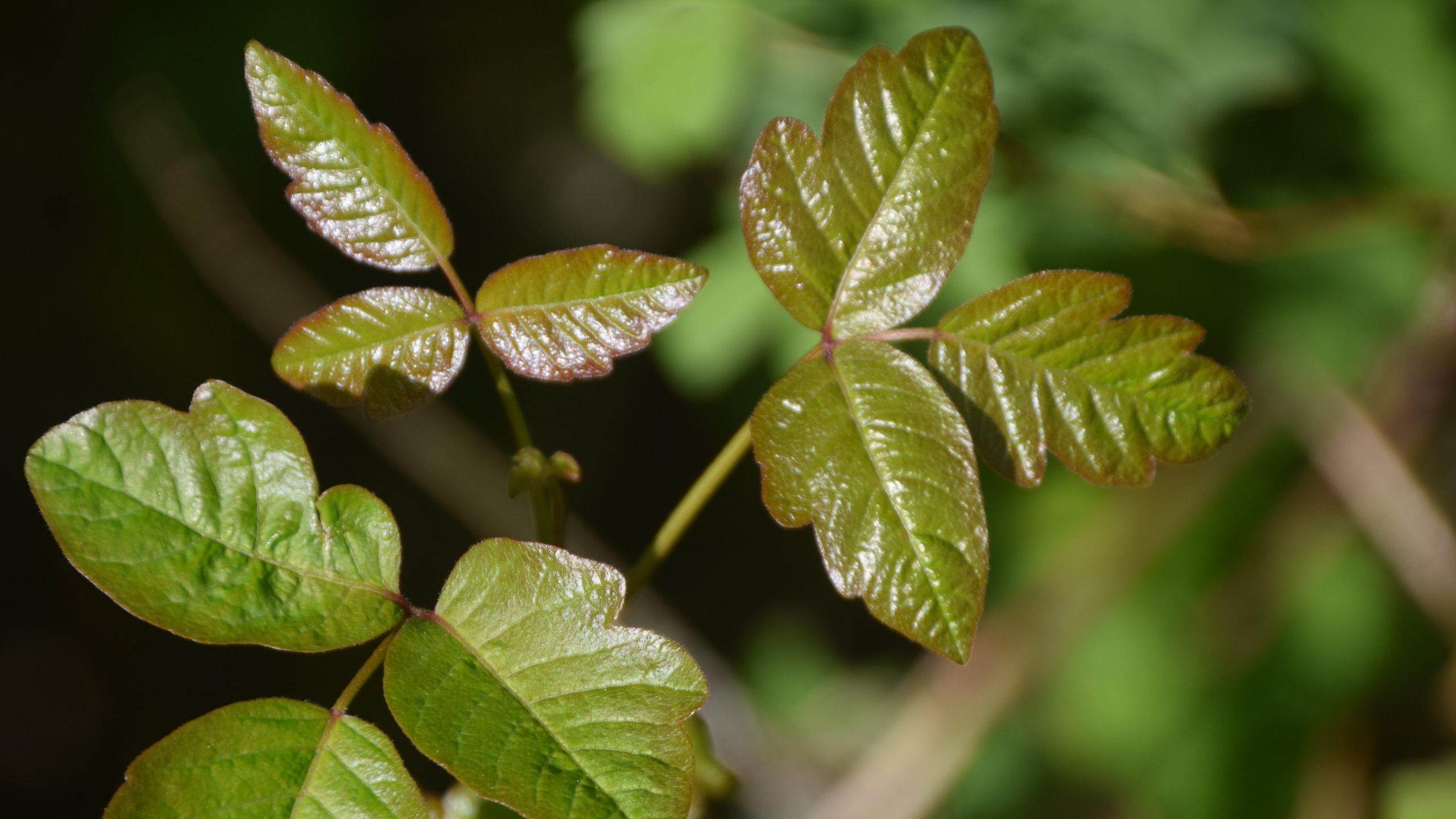Let Leaves of Three Be: A Poison Ivy Primer
A gnawing need to scratch.
Raised welts that somehow sting and itch simultaneously.
Absentminded scraping across bumps followed by immediate self-chastisement.
Ants crawling under the first layer of my skin.
Poison ivy rashes defy my descriptive powers. The plant’s scientific name – Toxicodendron radicans – is almost expressive enough.

All About Urushiol
An estimated 80-90% of humans are allergic to urushiol. For us, exposure to this oily mixture of organic compounds causes contact dermatitis, localized reactions caused by allergen exposure. And where might we be exposed? Mango fruit skin, lacquer tree sap, or – especially likely in Memphis – all the parts of poison oak, ivy, and sumac
Urushiol is oil-based, allowing it to stick to skin, tools, pet fur, and clothing. It also is difficult to clean up, as anyone who has spilled cooking oil can imagine. When a victim gets the oil on their skin, biochemistry takes over. The catechol molecules within urushiol oxidize inside the body and begin to stick to protein in skin cells. This changes the still-healthy cells’ shape. The immune system goes on high alert, attacking the skin cells as a foreign enemy. This response damages tissues and causes the swelling. New studies have shown that the itching is caused by the immune chemical interleukin 33, which acts directly on the skin’s sensory neurons, and mast cells, which trigger the skin’s itch neurons. The swelling, blistering, and itching are the outward appearances of these inward processes.
But why do these plants make this irritant in the first place? It only seems to affect humans, some higher primates, and guinea pigs. One hypothesis is that urushiol provides plants with physical armor for insect nibbles, sealing these wounds with a resin plug.
Poison ivy does fill an ecological niche – its fruits, called drupes, are food for birds, and the leaves are food for deer and insects.
Science is fascinating. It does not stop me from wanting to claw my forearm.
Accidents
Despite my hyperawareness for leaves of three on the landscape, accidents happen. I’ve been a member of the poison ivy club for most of my life, with increasingly unfortunate cases, which is the general trend for allergic reactions. There was the time I had a rash at summer camp that I scratched continuously in my sleep, leaving scars that still read on the memoir of my skin. More than a decade later, I was reclaiming my backyard from invasive privet and unknowingly dug out poison ivy roots, which are just as poisonous as the leaves. The oil got everywhere, including on my face. That was undoubtedly my worst case, one that necessitated a trip to the doctor, a verbal altercation with a nurse practitioner, and a round of steroids.
It makes my current case, one that again stems from digging out unseen poison ivy roots, seem tame by comparison. And yet, I still want to remove my top layer of skin.
Changing Climate
Our planet’s changing climate is having a negative effect on many species, but not poison ivy. Ecologist Jacqueline E. Mohan and her team have shown in a six-year study that increased carbon dioxide levels speeds up poison ivy’s growth, making it grow bigger and spread faster. As if that were not enough, increased CO2 causes the plants to create more allergenic forms of urushiol. To quote the study’s authors, “If Toxicodendron becomes both more abundant and more irritating to sensitive individuals, which includes 80% of the human population, it is likely that this plant will become a greater health problem in the future.”
Beware
Once you start looking for poison ivy, you’ll see it everywhere in Memphis – under bushes in city yards, climbing up to 60 feet into the trees at Shelby Forest, lurking next to the paths at Lichterman Nature Center. It vines, climbing up trunks with aerial roots. It crawls, spreading through the underbrush. It can even grow as a low shrub. In the sun or in partial shade, if you try to find it, you will.
As spring gets us outside, consider this your public service announcement to be on the alert for members of the Toxicodendron family and a reminder to have an emergency bottle of calamine lotion at the ready.
And if you do happen to have a reaction, might I suggest writing about it as a way to keep your fingers from scratching?

Caroline Mitchell Carrico is a native Memphian and, as a historian by training, she enjoys researching the city’s past and pulling it into the present. When she isn’t reading and writing, she can often be found cheering on her kids’ soccer teams.

